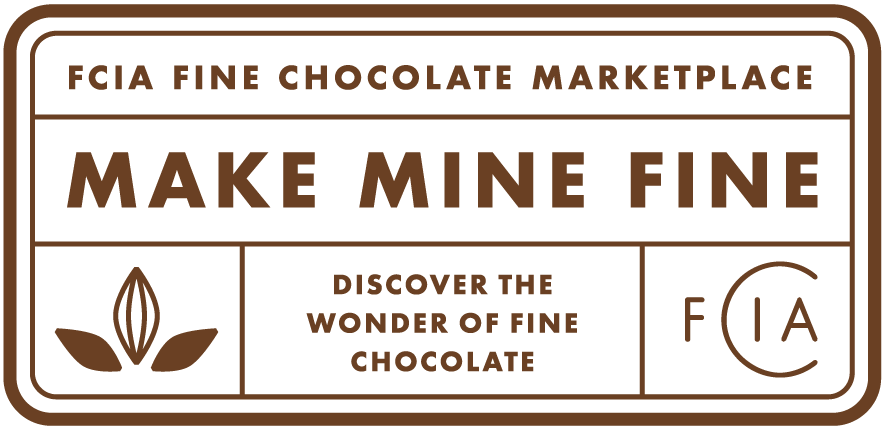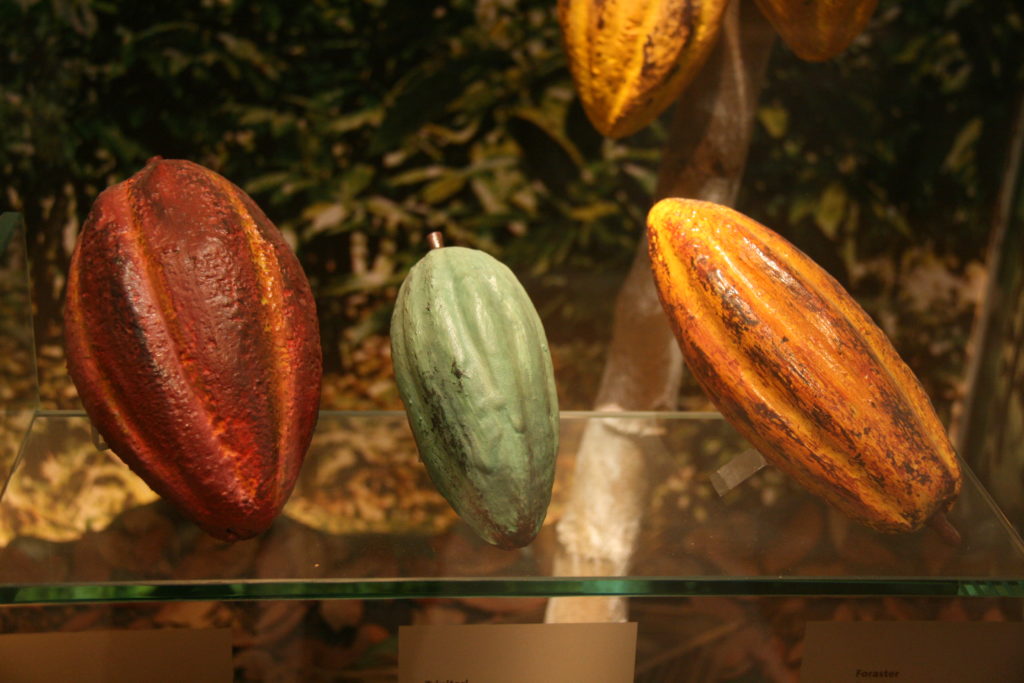Like wine, chocolate is an agricultural product whose character and flavor depend on genetics, climate, soil and processing practices to make the finished product. The higher the quality and care taken along the route from bean to bar, the better the finished product will taste.
Cocoa Flavor Map
MOCCA with Lutheran World Relief (LWR) leading cacao activities, in collaboration with ZOTO, invites you to join a cocoa flavor journey through Central and Latin America!
Discover how an innovative online tool highlights the flavor diversity of cocoas from 6 cocoa producing countries; the Cocoa Flavor Map was first launched in 2017 and it helped cocoa farmers from Honduras, Nicaragua, and El Salvador diversify their cocoas, get recognition, and reach new markets.
Origins of Cocoa and the Importance of Genetics
Theobroma cacao originated in the tropical forests of South America and later spread throughout Central America and Mexico.
There are now over 10 varieties of cacao but most people are familiar with the top three: Forastero, the robust and most widely grown; Criollo, the higher quality and higher value; and Trinitario, the hybrid of the other two. There are also several sub-varieties with different tastes. (source: Phayanak)
Forastero is the most widely grown, accounting for about 80% of world production. It is sometimes referred to as bulk cocoa. It was thought to have originated in the Amazon basin and was later brought to Africa and Southeast Asia where it was planted extensively because it produced high yields and was more pest resistant. The flavor of Forastero however is considered flat or monotone, even acidic, and lacks the rich flavor notes of the Criollo bean. Pods are usually short, yellow, smooth without warts and have shallow furrows (source: FAO.org).
Criollo is considered the highest quality variety and often receives a premium price in the market. It provides a fine flavor with rich aromas. It accounts for less than 1% of world production. FAO.org describes Criollo pods when ripe as “long, yellow or red, with deep furrows and big warts.”
Trinitario is the third variety and is a hybrid of the other two. It accounts for about 5% of the total world production and can be found in Ecuador, Colombia, Sri Lanka, Madagascar, Venezuela and other parts of the world. The pods can be long or short, red or yellow.
As cacao trees cross pollinate, it becomes very hard to determine the exact genetics of orchards without DNA testing. There are also wild cocoa trees found in the Amazon region, many which are just now being DNA tested by researchers.
Exploring Cocoa-Growing Countries
Fine cacao thrives in countries like Venezuela, Ecuador, Peru, Colombia, the Dominican Republic, Mexico, Belize, Costa Rica, Guatemala, Honduras, Trinidad, Madagascar, the Philippines and even Hawaii. These and other select countries have the right genetics, climate, soils, and post harvest practices to produce fine cacao.

Click below for a virtual tour of cocoa in each country (more country profiles coming soon).
- Belize
- Bolivia
- Brazil
- Colombia
- Costa Rica
- Dominican Republic / República Dominicana
- Ecuador
- Guatemala
- Madagascar
- Mexico: Tabasco and Chiapas
- Nicaragua
- Papua New Guinea
- Peru
- Republic of Trinidad and Tobago
Climate and Soil
Cocoa grows within 20 degrees north or south of the equator. Cocoa trees require high humidity, fertile soils, with abundant rainfall and warm temperatures. In drier climates, cocoa can be irrigated. Sound farming practices such as organic fertilization and pest management affect the quality of beans being produced by the trees.
Since soil conditions vary widely throughout the equator the “terroir” or specific geography, soil, and climatic conditions of a region can add distinction to the character and flavor of the cacao.
Processing on Farms
Chocolate processing starts at cocoa farms where farmers select the right time to remove ripe pods from the trees and carefully extract the beans from the pods. When cocoa beans are harvested, they must first be properly fermented and dried.
The care given to the fermenting process is one of the most important factors in the quality of the chocolate. Different varieties require different fermentation processes to create the complex chemical change that will take place within the bean and allow the true flavor of the chocolate to develop properly.
Also, proper drying of the beans ensures the correct fermentation process is not compromised on the beans’ long trip to the chocolate maker or processor.
Cocoa and the Environment
In the wild, cocoa is a shade-loving tree that grows well in tropical forests. If planted in a mixed agroforestry setting, cocoa can be good for the environment because it provides a habitat for wildlife and protects fragile soils.
Cocoa farms are not, however, a replacement for natural forests. In some cases, it is detrimental to the environment if forests are clear cut and planted in full sun with cocoa. Fine chocolate companies want to avoid this practice. They typically support traceability systems to know exactly where and how their cocoa is grown. Many of these companies have developed direct relationships with cocoa farmers and actually travel to farms to make purchases.
The majority of fine chocolate companies participate in certification and pay premiums to farmers for their cocoa. They work with environmental groups and local farmers to develop good environmental practices.
Did You Know…?
- A third of cocoa trees are lost each year to diseases and pests.
- A cocoa tree is roughly the size of an apple tree.
- Cocoa grows well together with other tree crops and food crops.
- Cocoa pods grow on its branches and trunks of the tree.
- Farmers usually have one to two harvests of cocoa a year.
- Each cocoa tree produces 2,500 beans a year.
- Each cocoa pod contains about 40 to 50 beans.
- The white pulp inside the pod and surrounding the beans has a nice flavor.
- There are 400 cocoa beans needed to make a pound of chocolate.
- West Africa produces 70 percent of the global supply of cocoa.
- The majority of fine cocoa comes from Latin America, although fine cacao can be found throughout the world.
- The majority of cocoa farms are small scale, family owned.
- Cocoa trees start producing after 3 to 5 years, and can give marketable cocoa beans for about 25 years.
- Worldwide, 40-50 million people depend on cocoa for their livelihoods.
Heirloom Cacao Preservation Fund
The mission of the Heirloom Cacao Preservation Fund (HCP) is to “identify and preserve fine flavor (“heirloom”) cacao varieties for the conservation of biological diversity and the empowerment of farming communities.”
The Heirloom Cacao Preservation Fund (HCP) formed in response to the global pressures of environmental change, deforestation, and economic influences threatening the world’s supply of high quality, flavorful cacao. Recognizing these endangered cacao trees are the foundation for not only delicious chocolate, but also the livelihood of many farmers and farming communities.
HCP has designated 16 Heirloom Designees around the world and supports programs at 6 designee sites developing best practices for the preservation of fine flavor “heirloom” cacao.
To learn more about the HCP Designation process and preservation efforts, watch HCP’s Documentary
Thanks to Our Sponsor


